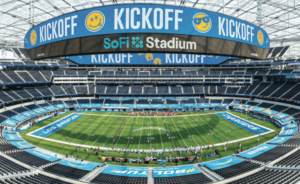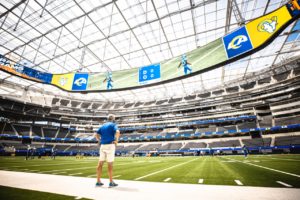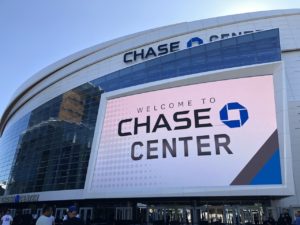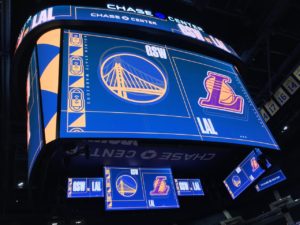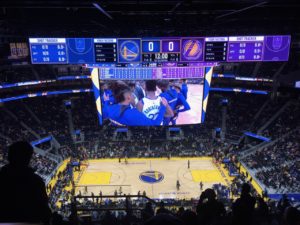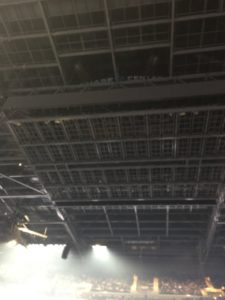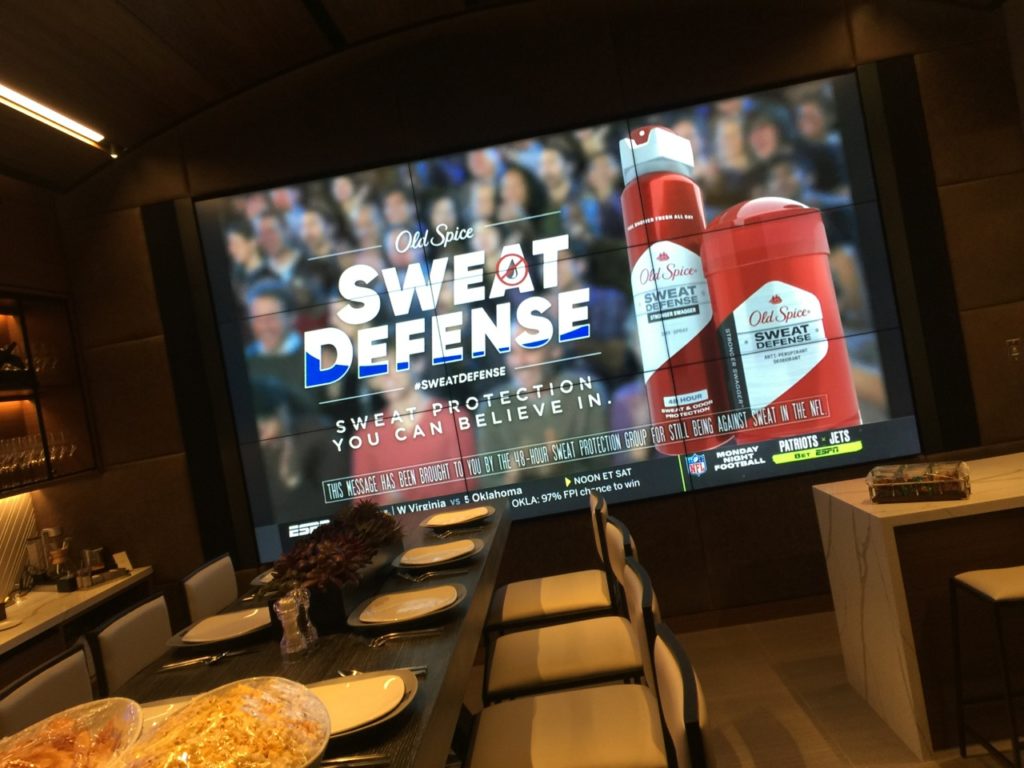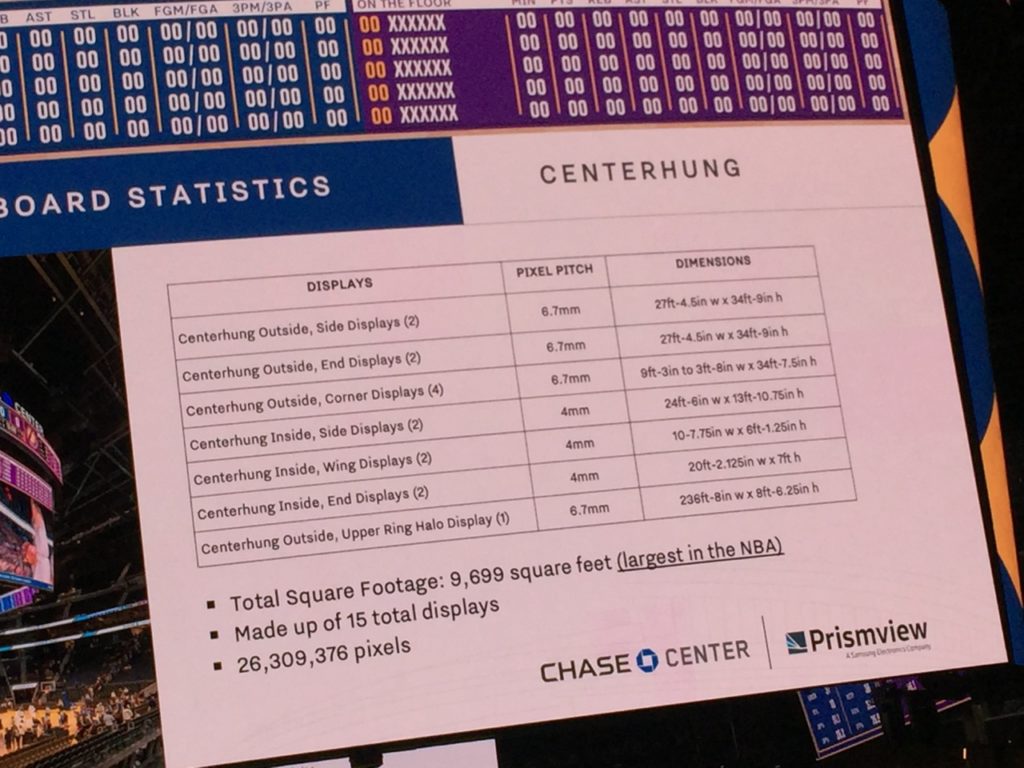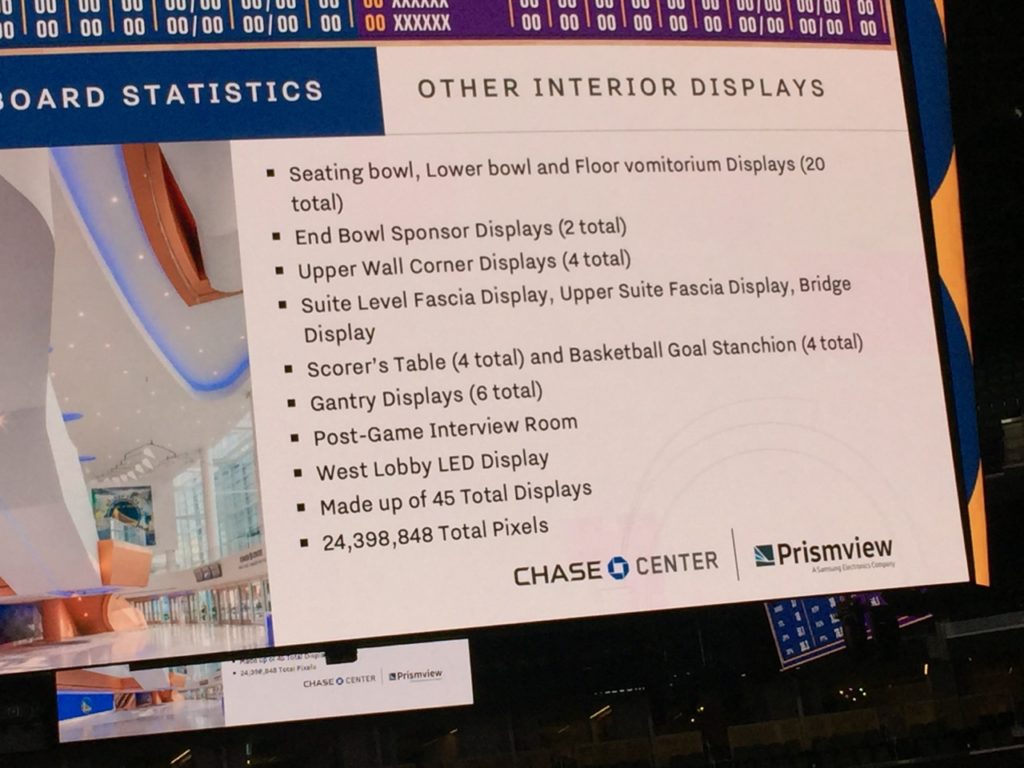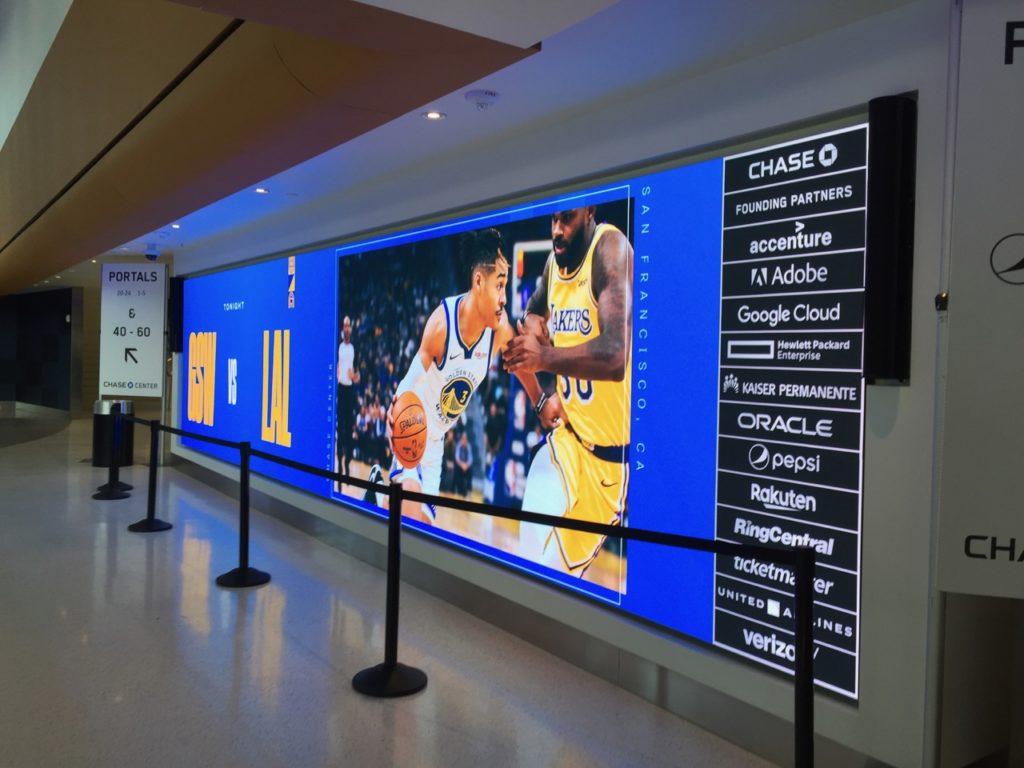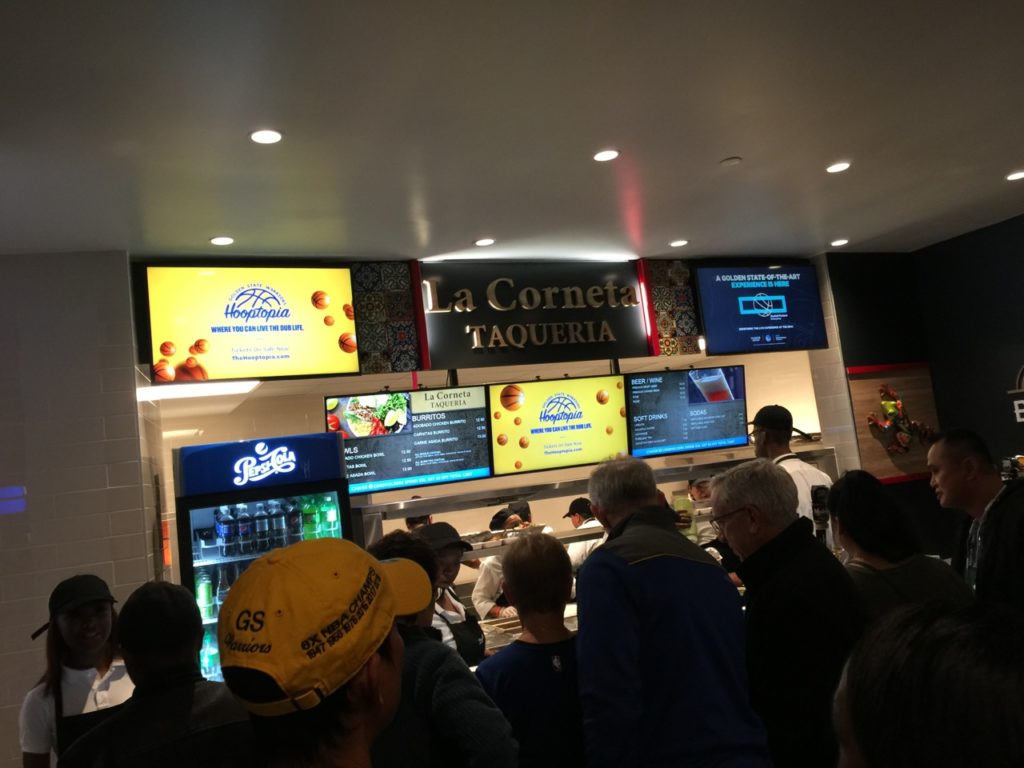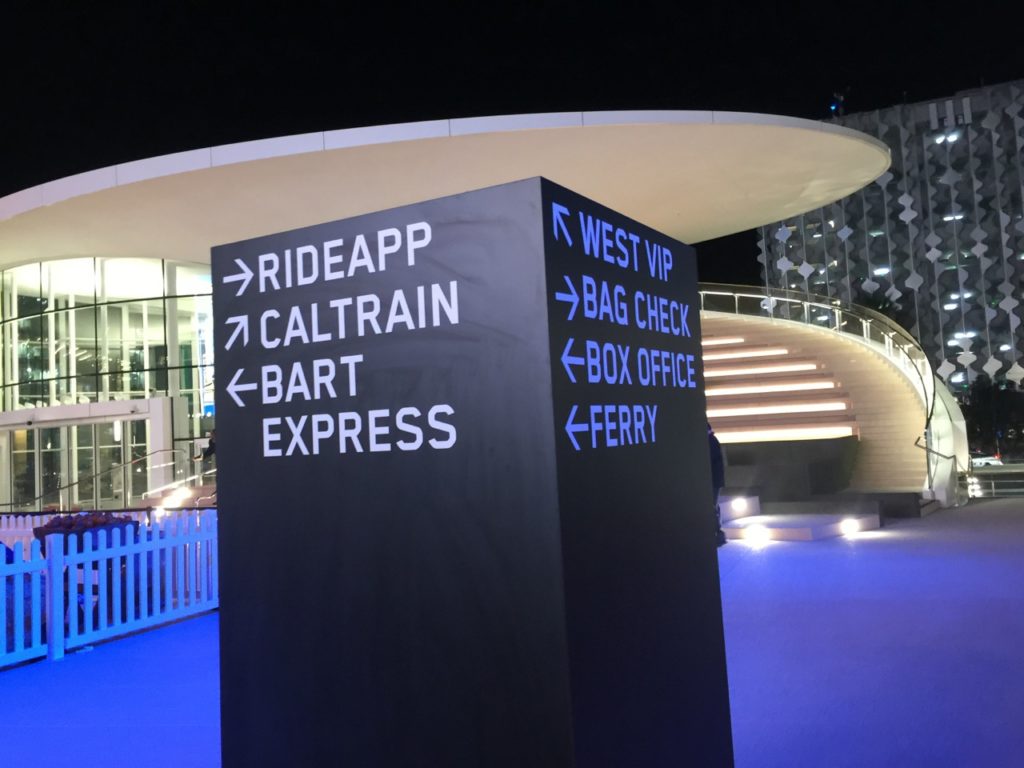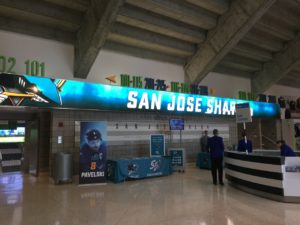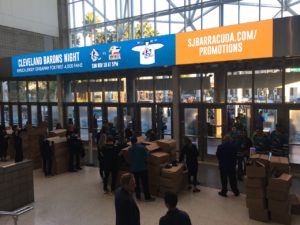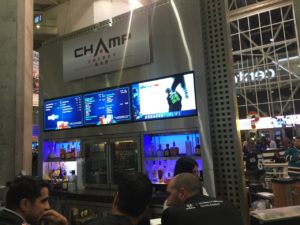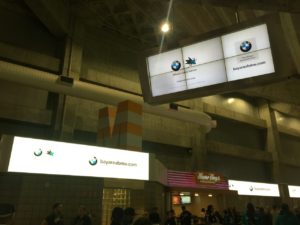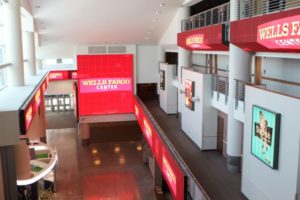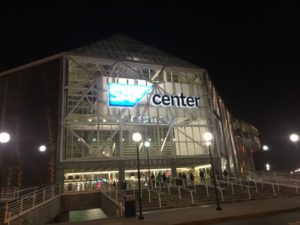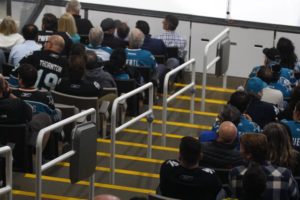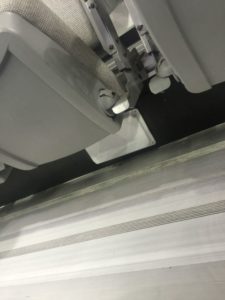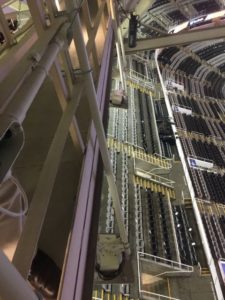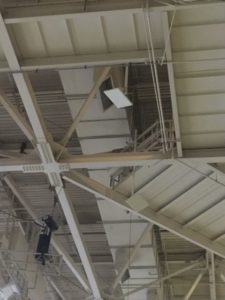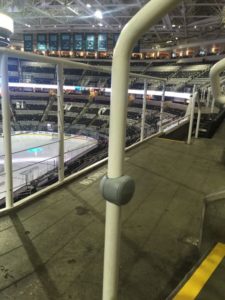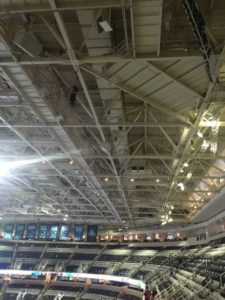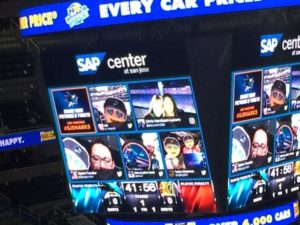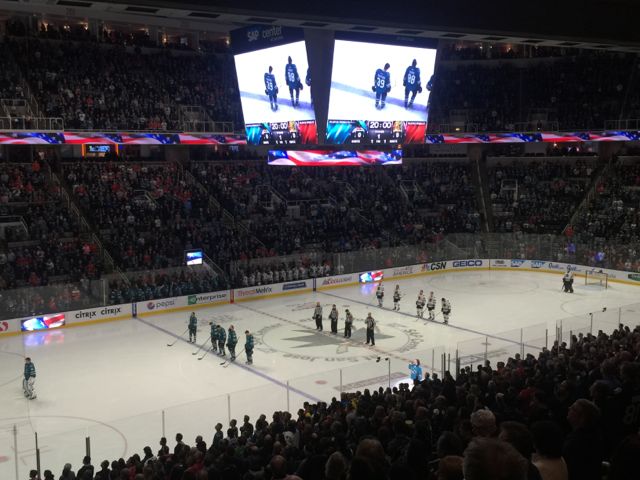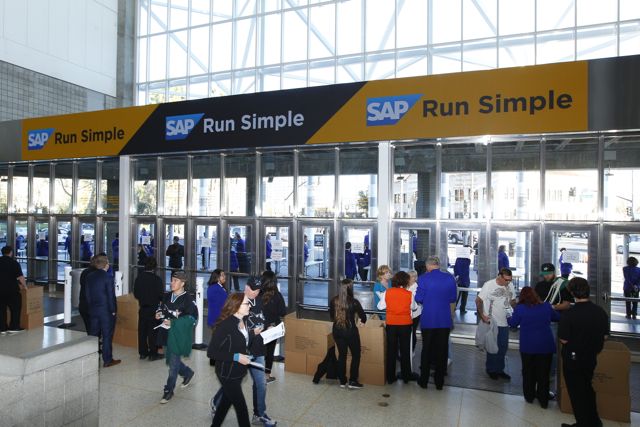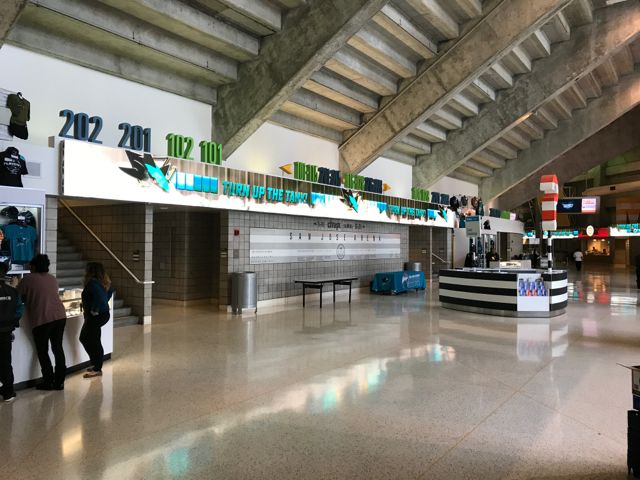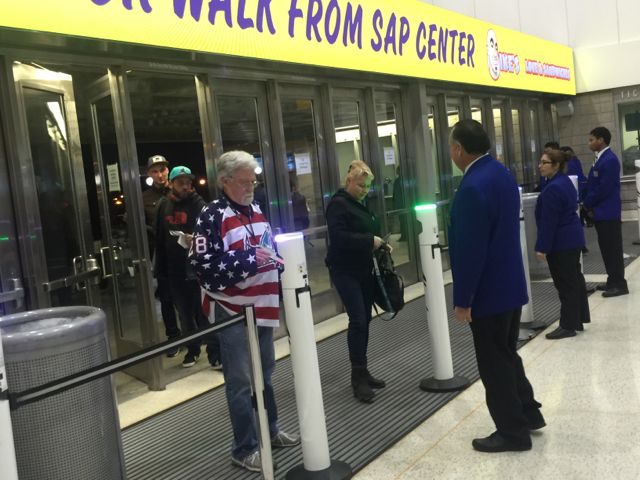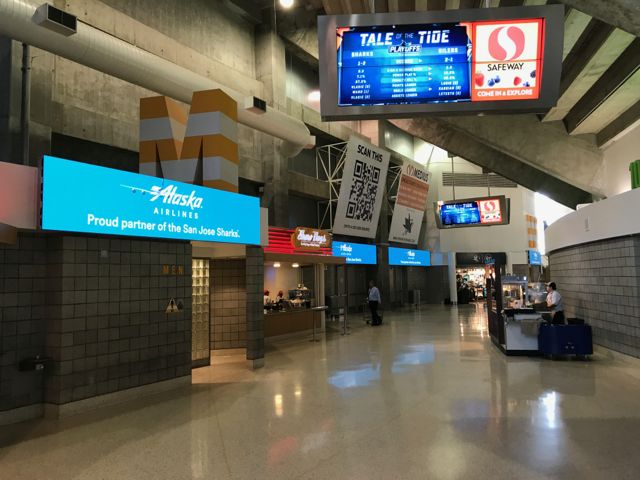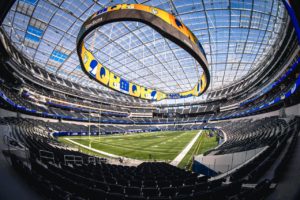
SoFi Stadium’s oval videoboard is the visual centerpiece of the new venue. Credit: Jeff Lewis/LA Rams
Once just a vision captured by artist renderings, the main video board at SoFi Stadium is now a stunning reality, showing what’s possible when you combine a powerful idea with the technology, construction expertise and the will to make it so.
While fans will have to wait for the pandemic to subside before they can fully enjoy its attributes, like its full 4K resolution, the 120-yards long double-sided oval videoboard from Samsung – which is as tall as four stories high at its largest points – has been providing “wow” moments all fall to TV audiences who get glimpses on-screen of the board in action. But take their word for it, those who have seen it in person are generally in awe.
“It’s absolutely fascinating – I’ve never seen anything like it,” said Skarpi Hedinsson, chief technology officer for SoFi Stadium and Hollywood Park. The stadium is home to two NFL teams, the Los Angeles Rams and the Los Angeles Chargers. Early this fall at a team scrimmage, the board was lit up and Hedinsson walked all around the stadium for looks from as many vantage points as possible, and came away stunned.
“It’s everything we had hoped for,” Hedinsson said. “It’s exactly what it was designed to do.”
Vision of Kroenke
When the idea of what would become SoFi Stadium was being developed, several sources we talked to pointed to Rams Owner/Chairman and SoFi Stadium and Hollywood Park developer Stan Kroenke as the visionary for a videoboard that had never been done before.
“I have to give full credit to Mr. Kroenke for the vision,” said Hedinsson. “He sat down with HKS, our architects, and asked what was the ‘art of the possible.’ It was all part of how to innovate for the guest experience, and how to approach it.”
The evolution of videoboards in large NFL-type venues has become an interesting trend to watch, with highlights along the way including the massive centerhung screen at the Dallas Cowboys’ home, AT&T Stadium, and the circular “Halo Board” that sits below the outside edges of the camera shutter-like closable roof at the Atlanta Falcons’ Mercedes-Benz Stadium.
At SoFi Stadium (and the adjacent Hollywood Park), where various reports estimate that Kroenke has spent somewhere north of $5 billion in development costs, the needle of innovation has now been moved in a much different direction. Originally nicknamed the “Oculus” (a term no longer used by the stadium) the double-sided oval board hangs from the stadium’s cable-supported roof in a manner designed to present a clear video view to any seat in the house, from the field-level seats all the way up to the highest decks. Capacity for SoFi Stadium is estimated at approximately 70,000 for NFL games, and up to 100,000 for special events, like the Super Bowl.
So what are the stats?
According to figures provided by SoFi Stadium and by Samsung, the videoboard sits 122 feet above the playing field and 70 feet below the roof canopy; at 120 yards it is longer than the field of play, and it is also wider than the field. According to Samsung, its outdoor LED products were used exclusively to build the 70,000 square-foot dual-sided screen, which contains nearly 80 million pixels at a spacing distance of 8 millimeters from center to center.
The board is not symmetrical in shape for a reason: According to Samsung, the different sizes are part of the strategy of making the board visible to all seats in the venue. Mark Quiroz, Samsung’s vice president for sales, marketing and business development, said the company did virtual simulations of the screen’s visibility angles to all the seating sections to help determine the best final shape.
“It was all about getting the best views for the fans,” Quiroz said of the virtual testing.
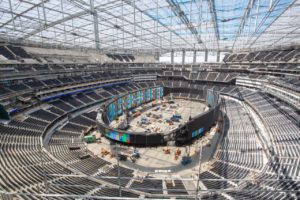
The videoboard was first assembled on the field level, then raised up later. Credit: Jeff Lewis/LA Rams
At its tallest points, the board’s largest panel is approximately 40 feet tall; at the smallest points it is approximately 20 feet tall. According to Samsung, fans seated in the lower bowl will view the inside of the videoboard, while fans in the upper bowl areas will view the outer panels of the videoboard.
According to SoFi Stadium, the videoboard not only features the most LEDs ever used in a sports or entertainment venue, but it also has the first 4K end-to-end video production in a stadium, one that has 12 Gbps connections between cameras to ensure enough band- width for the higher-resolution content. The videoboard also has a JBL audio system that is home to more than 260 of the stadium’s approximately 4,500 loudspeakers.
According to Hedinsson, the videoboard will also eventually house 5G cellular antennas, since the location of the board gives it a perfect line-of-sight mounting position for the seating bowl.
If Hedinsson’s initial impression is correct, it would seem that all the partners involved in the board’s construction and deployment nailed Kroenke’s original vision, and made it come to life. But it was far from an easy task.
How to build ‘the art of the possible’
According to Hedinsson, the uniqueness of the videoboard and its structural size dictated that all design had to start by thinking about the board first.
“It [the videoboard] needed to be part of the earliest discussions – you have to design around an idea like that,” Hedinsson said. Since the 2.2-million-pound board would rely on the stadium’s cable-net roof for support, it was both one of the first structures to be designed, and one of the last to be put in place. The board was actually assembled on the ground inside the venue, and then hoisted into place after the roof was built.
According to Samsung’s Quiroz, the final installation of the board involved a lot more than just pulling on some cables.
“The most challenging aspect [of the construction] was the tolerance levels in the seams,” said Quiroz, talking about the tightness needed to keep screens close together so that the video output does not have any visible breaks.
“Getting the seams right on the ground was one thing, and then keeping it together until you get it in the final resting place was another major challenge,” Quiroz said.
As if the construction team needed any more difficulty, during the final months of building the project had to deal with the onset of the Covid-19 pandemic. While admitting that Covid was “kind of a cloud that loomed over everything,” Quiroz said that since the overall project was a closed situation in a fairly large space made it somewhat easier to deal with safety requirements like social distancing.
Using the new canvas
When fans finally are allowed in the venue, the final chapter of the SoFi Stadium videoboard will be written – or, more accurately, shown in 4K resolution, as game information and sponsor messages make use of the one-of-a-kind screenscape. With the circular shape, all the potential providers of content – from the teams to the potential sponsors – seem excited about the possibilities.
“With the custom shape, there are probably things that still need to be developed,” said Samsung’s Quiroz, about the need for new design tools and new ways of thinking about what types of content might be possible. “We provided the template, so now it’s all about how you can use the capacity.”
According to Hedinsson, the SoFi tenant teams – both the Rams and the Chargers – have actively been working on building content for the board since December of 2019. With various “modes” available for display
– including full 360-degree perspectives and “full takeover,” where the Ross Video and Cisco Vision display management systems in tandem will allow a single message across not just the video board but over all the 2,000-plus smaller displays in the venue – Hedinsson is looking forward to times when the video board fulfills its promise of being able to amplify the atmosphere.
“The teams have really embraced [the board’s possibilities],” Hedinsson said. “We’re going to see some really interesting uses of the space.”
